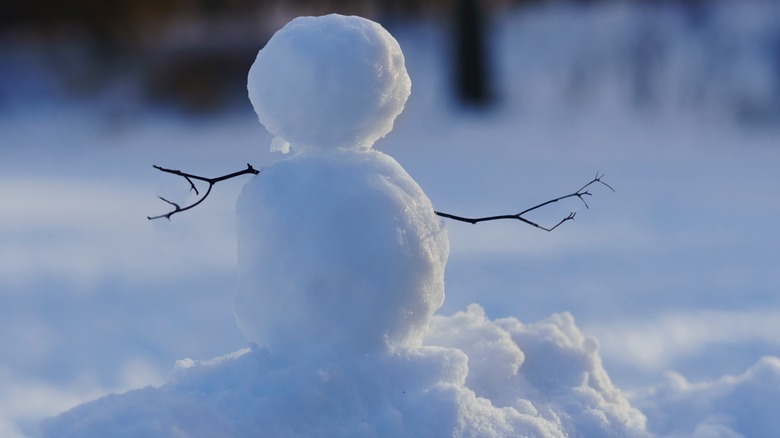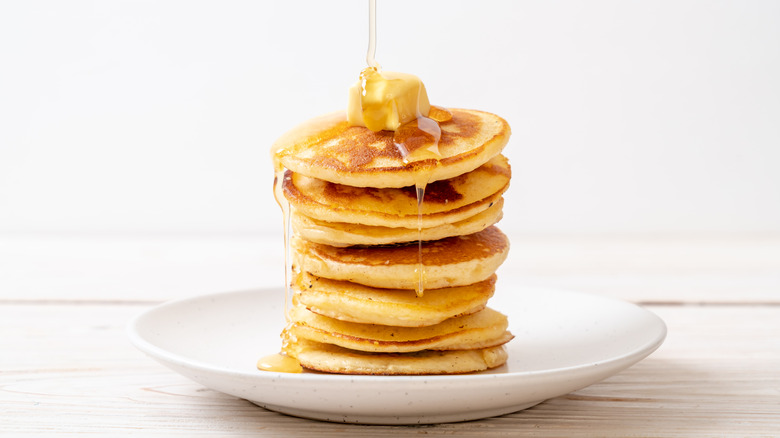For The Fluffiest Pancakes, Fold In Some Clean Snow
When you imagine cooking with snow, you might picture something out of a Louisa May Alcott novel: a New England wood, a crackling hearth, a mantel adorned with holly branches. But in many contemporary kitchens around the world, it's actually pretty common to turn to winter's signature accumulation of ice crystals as a secret ingredient. The Guardian cites a 200-year-old recipe for maple taffy, in which hot maple syrup (which should be 240 degrees, according to Martha Stewart) is poured onto fresh snow, setting it into a sticky treat that's traditionally paired with sour pickles, crackers, donuts, and coffee.
Fresh snow can also be used to make ice cream, per The Guardian, as well as muffin-like "snow cakes" (a recipe for which appears in Denis Cotter's seminal cookbook "For the Love of Food"). If you find yourself snowed in at home this winter, you can also reach for some fresh snow to fluff up your pancake breakfast.
Snow adds lightness and crispiness
In her recipe adapted from the 1880 tome "Miss Parloa's New Cook Book: A Guide to Marketing and Cooking," Merry Post of The Ellsworth American explains that adding snow to pancakes is an age-old tradition that makes for a light and fluffy breakfast. "When the batter hits the hot pan, the snow quickly turns to expanding steam, which leavens the pancakes," she explains. Post's recipe calls for 3/8 to 1/2 cup of snow, noting that "keeping a larger quantity in a bowl ensures that the snow will not melt before you finish making all the pancakes."
The Guardian lays out some theories regarding the history of snow pancakes, including one that says snow was mixed into pancake batter after WWII on account of an egg shortage. The outlet also cites a theory that says the natural ammonia in fresh snow acts as a leavening agent, suggesting it might have been used to help baked goods rise before the invention of baking powder.

